How an NCR on a Design Change killed 114 People in a few seconds (Hyatt Regency Kansas City Collapse)
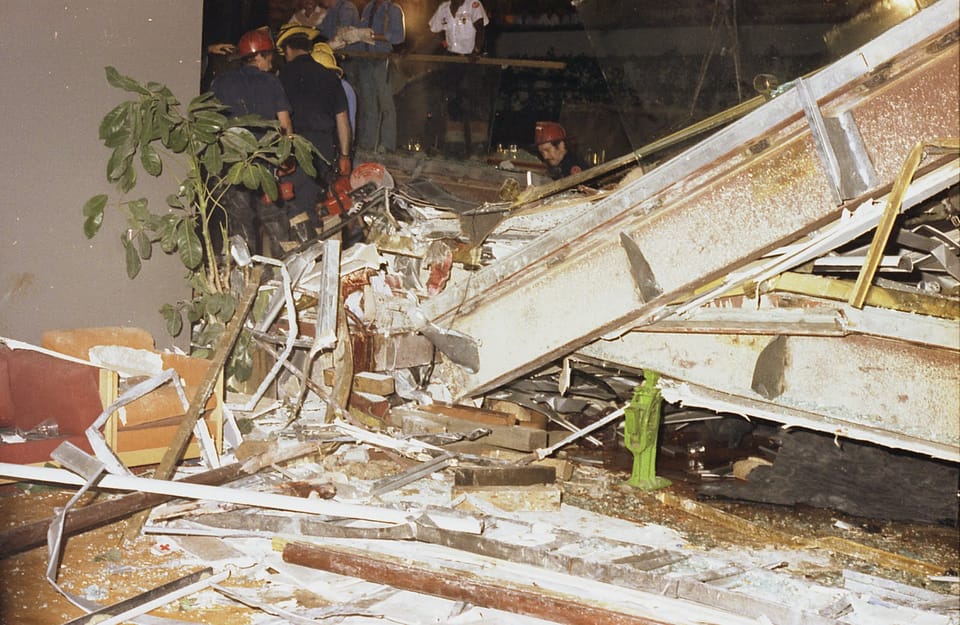
Everybody who works in construction knows that things can go wrong.
Everybody knows that even the slightest mistake or lapse somewhere can lead to a disaster.
Nonconformities in construction industry not only lead to “waste” or “dissatisfied” customers.
Nonconformities in construction can literally kill people.
Unfortuantely, that was the case for the infamous Hyatt Regency hotel walkway collapse in the USA.
The Hyatt Regency hotel walkway collapse occurred at the Hyatt Regency Kansas City in Kansas City, Missouri, United States on Friday, July 17, 1981.
Two vertically contiguous walkways collapsed onto a dance competition being held in the hotel’s lobby. The falling walkways killed 114 and injured a further 216 people.
At the time, it was the deadliest structural collapse in U.S. history, not surpassed until the collapse of the south tower of the World Trade Center in 2001.
PHOTOS BEFORE THE COLLAPSE:
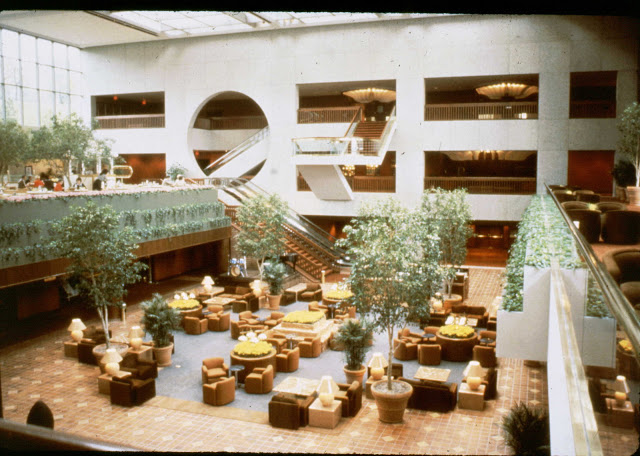
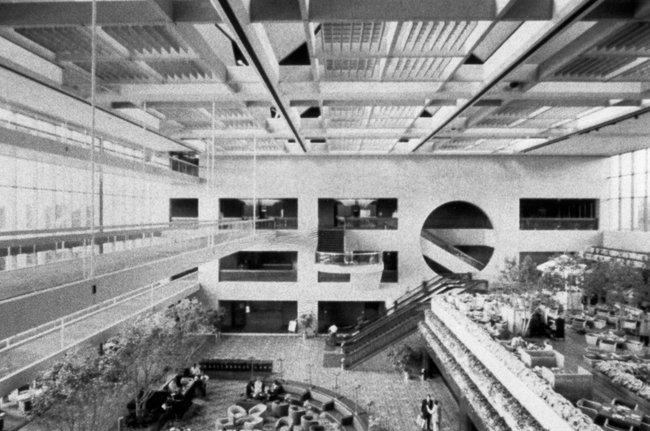
On the evening of July 17, 1981, approximately 1,600 people gathered in the atrium to participate in and watch a dance competition. Many people stood on the two connected walkways.
At 7:05 p.m. the second-level walkway held approximately 40 people with more on the third and an additional 16 to 20 on the fourth level who watched the activities of the crowd in the lobby below.The fourth floor bridge was suspended directly over the second floor bridge, with the third floor walkway offset several meters from the others.
PHOTOS AFTER THE COLLAPSE ON July 17, 1981
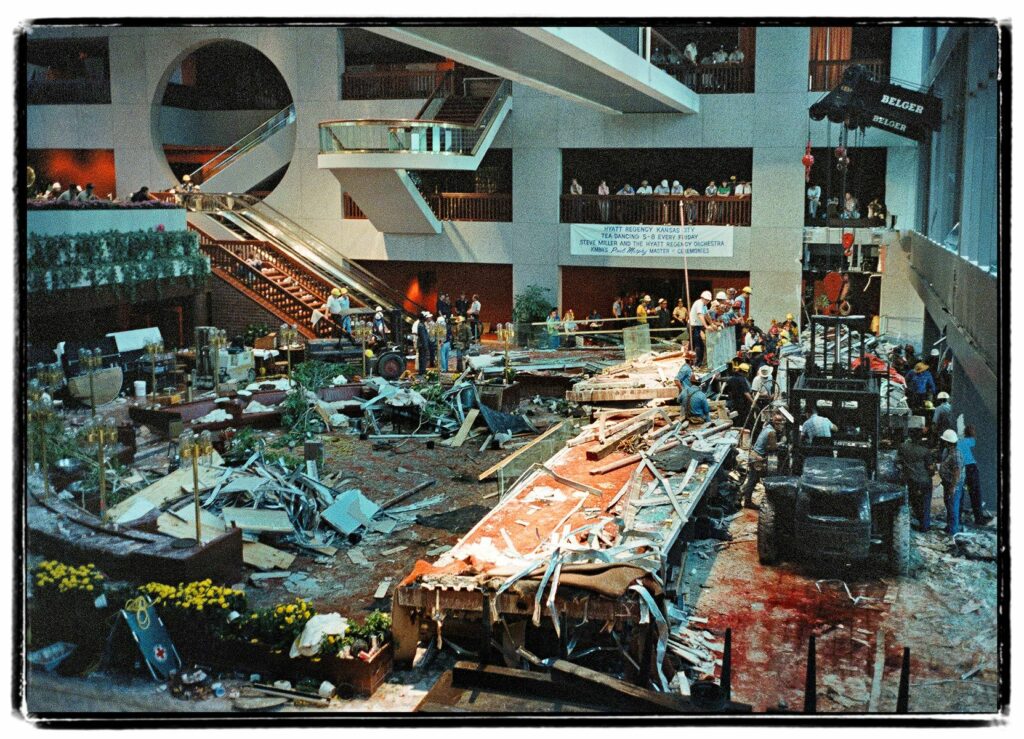

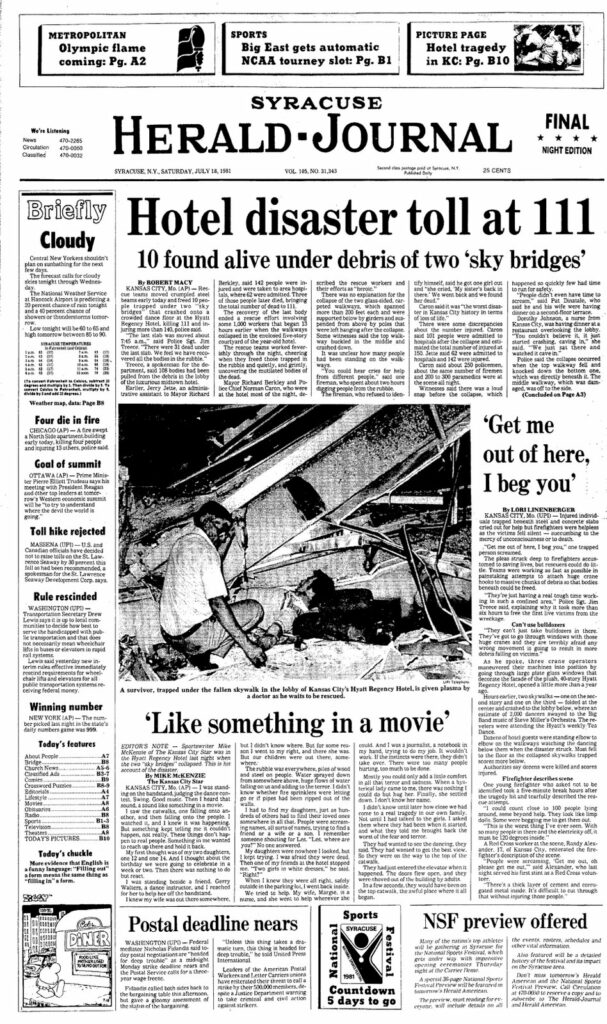
Construction difficulties resulted in a subtle but flawed design change that doubled the load on the connection between the fourth floor walkway support beams and the tie rods carrying the weight of both walkways.
This new design was barely adequate to support the dead load weight of the structure itself, much less the added weight of the spectators. The connection failed, and the fourth-floor walkway collapsed onto the second-floor walkway. Both walkways then fell to the lobby floor below, resulting in 111 deaths at the scene and 219 injuries. Three additional victims died after being transported to hospitals, bringing the total number of deaths to 114.
Three days after the disaster, Wayne G. Lischka, an architectural engineer hired by The Kansas City Star newspaper, discovered a significant change of the original design of the walkways. Reportage of the event later earned the Star and its associated publication the Kansas City Times a Pulitzer Prize for local news reporting in 1982. Radio station KJLA would later earn a National Associated Press award for its reporting on the night of the disaster.
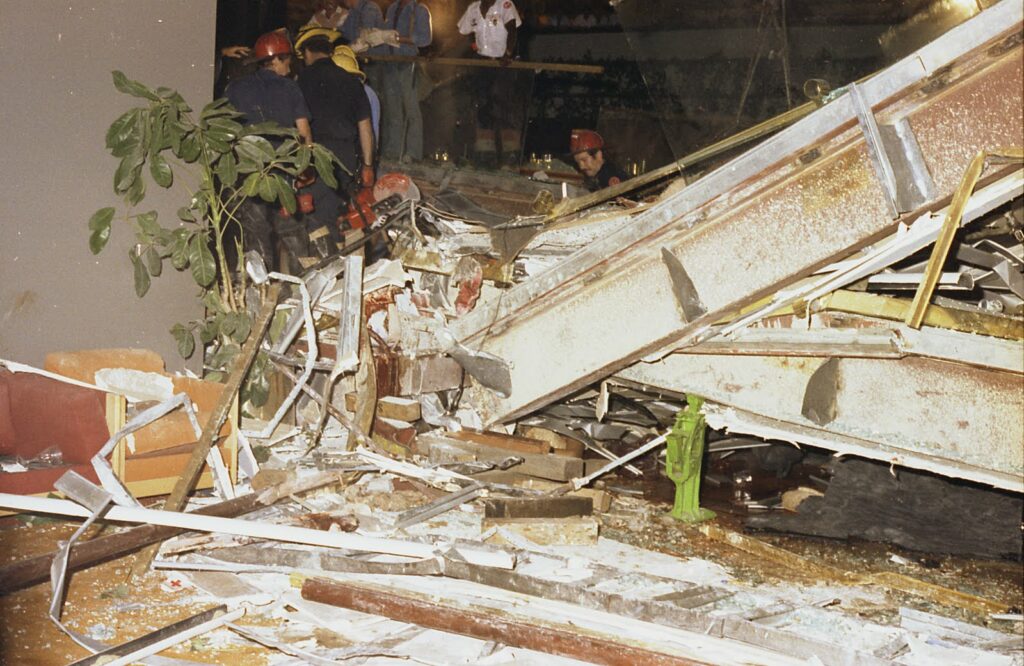
The two walkways were suspended from a set of 1.25 in (32 mm) diameter steel tie rods, with the second floor walkway hanging directly under the fourth floor walkway. The fourth floor walkway platform was supported on three cross-beams suspended by steel rods retained by nuts. The cross-beams were box girders made from C-channel strips welded together lengthwise, with a hollow space between them.
The original design by Jack D. Gillum and Associates specified three pairs of rods running from the second floor to the ceiling. Investigators determined eventually that this design supported only 60 percent of the minimum load required by Kansas City building codes.
THE EVENTS THAT TRIGGERED THE COLLAPSE
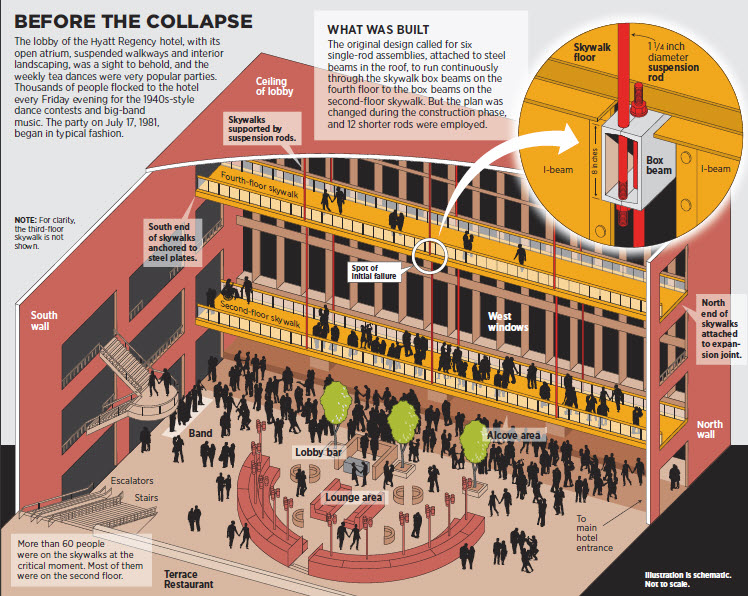
In this video you can see a very good demonstration of the mechanism of the collapse:
And this is a documentary demonstrating the events of that day and the investigations that followed after:
CONCLUSION:
If someone extracts all the technical details and tries to identify the deepest root cause of why that disaster happened, it is pretty obvious that some processes didn’t work as they should.
However, the disaster resulted in a nationwide reexamination of building codes in the US, which was probably the best thing out of the whole story (if we can say there is a “good” thing out of so many unnecessary deaths…).
Investigators concluded that the basic problem that lead to the catastrophic collapse was a lack of proper communication between Designer and t fabricators and contractors.
And this is probably the biggest problem/root cause of the most typical NCRs in construction industry till today: lack of proper communication.
Member discussion